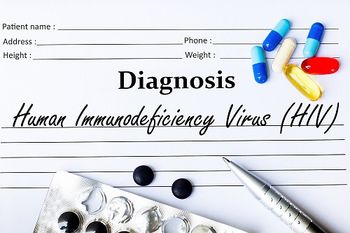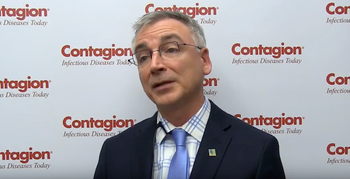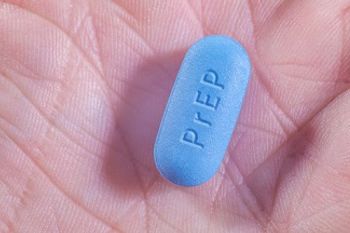
Plazomicin is a next-generation aminoglycoside with in vitro activity against multidrug-resistant Enterobacteriaceae.

Plazomicin is a next-generation aminoglycoside with in vitro activity against multidrug-resistant Enterobacteriaceae.

Edmond Hooker, MD, DrPH, discusses the use of a launderable mattress cover to reduce C. diff rates in hospitals.

William Schaffner, MD, explains why dogs cannot catch flu from humans.

Researchers are investigating outbreaks of Shiga toxin-producing E. coli in the United States and Canada, which may be linked to contaminated romaine lettuce.

Richard Haupt, MD, MPH, sheds light on the Clostridium difficile Vaccine Efficacy Trial (CLOVER).

Daniel Diekema, MD, explains how clinicians can actively work to prevent pathogen spread in their health care facilities.

Check out the top 10 infectious disease articles of 2017.

Pedro Cahn, MD, describes the risk associated with raltegravir HD.

Leonard Sigal, MD, explains why Lyme disease is sometimes overdiagnosed or overtreated.

It was a big year for Lyme disease on Contagion®, with coverage of advances in early testing and other diseases that may be linked with the disease, to a panelist of experts debating the existence of chronic Lyme disease in our first-ever Peer Exchange® panel.

William Schaffner, MD, discusses efforts to develop a universal flu vaccine.

Here is a list of our top 5 viral infectious disease news stories from 2017; Did you read them all?

Dr. Richard Vickers, explains what makes ridinilazole unique.

We break down our top HIV news stories of 2017. Did you read them all?

Michael Edmond, MD, MPH, MPA, stresses that a collaborative effort is needed to control C. difficile in hospitals.

Pedro Cahn, MD, explains who the target population is for raltegravir HD.

In case you missed them, we've compiled the top five infectious disease articles from this past week.

Richard Haupt, MD, MPH, discusses the process for developing a vaccine.

Robert Bransfield, MD, DLFAPA, explains how psychoneuroimmunology can work to bridge the gap between psychiatrists and infectious disease physicians to improve patient care.

Edmond Hooker, MD, DrPH, explains how regulatory agencies are “turning a blind eye” to an important issue experienced in hospitals everywhere.

Investigators from the Duke Human Vaccine Institute have developed a binding assay capable of more accurately identifying new versus long-standing HIV infections.

William Schaffner, MD, explains the strengths and weaknesses of the flu vaccine.

The US Food and Drug Administration (FDA) has approved Ortho Clinical Diagnostics' VITROS Immunodiagnostic Products HIV Combo Reagent Pack and Calibrator on the VITROS 3600 Immunodiagnostic System.

Daniel Diekema, MD, describes recent developments made in rapid and molecular diagnostic testing in the microbiology lab, and how these tests strengthen infection prevention efforts.

Dr. Richard Vickers explains how recurrent infection is an unmet medical need when it comes to C. difficile.

In case you missed them, we've compiled the top 5 articles from this past week.

Richard Haupt, MD, MPH, discusses the different pharmaceutical companies’ efforts to develop a C. difficile vaccine.

Michael Edmond, MD, MPH, MPA, explains who is in charge of leading infection control programs in hospitals.

A new study from investigators at Drexel University revealed that if 25% of high-risk men who have sex with men appropriately used the pre-exposure prophylaxis (PrEP), 3 out of every 10 HIV infections in this population could be prevented.

Pedro Cahn, MD, shares the results found after 96-weeks of follow-up for the onceMRK Phase 3 clinical trial.